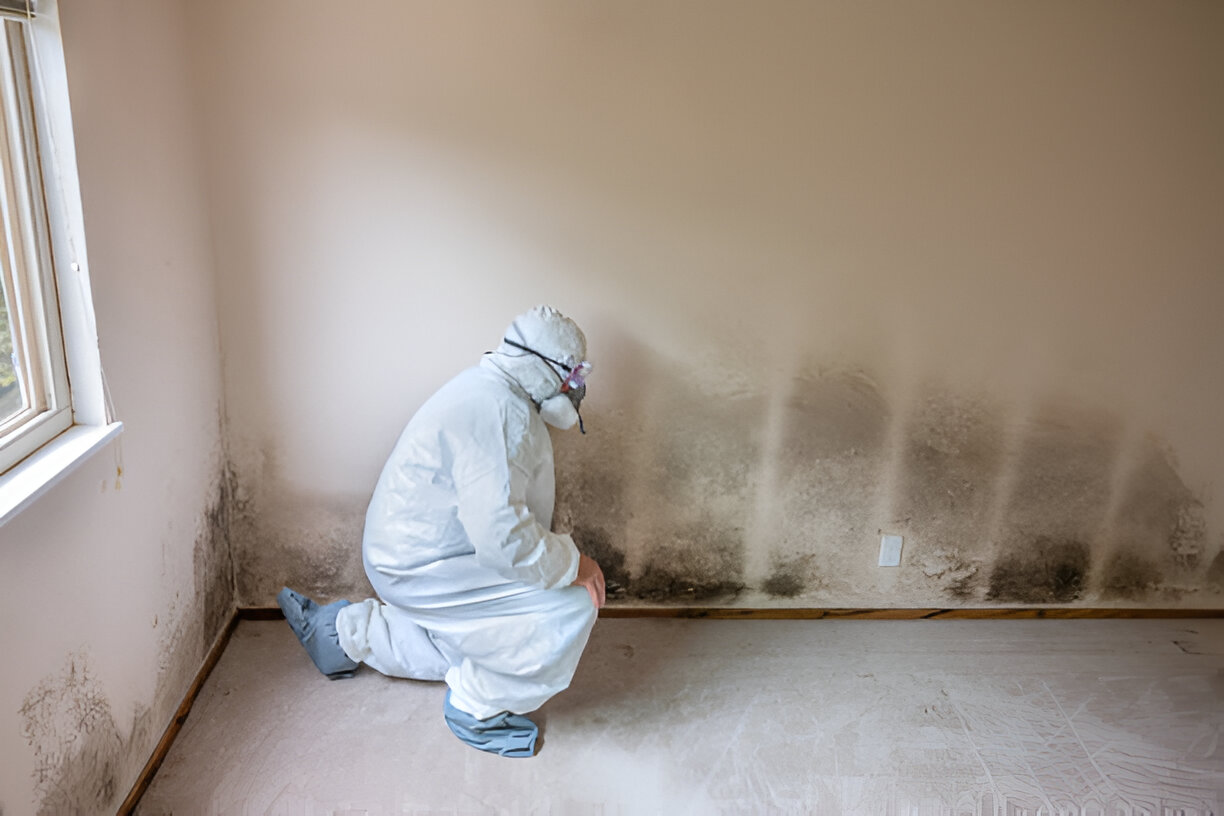

Mold is a common household issue that can pose serious health risks and structural damage if left untreated. Many homeowners and business owners use the terms mold removal and mold remediation interchangeably. However, these two processes are distinctly different in their approach and effectiveness.
Read this blog to understand the differences that can help individuals make informed decisions when dealing with mold infestations.
What is Mold Removal?
Mold removal refers to the process of physically eliminating mold from a surface. It is a superficial treatment that often involves the use of cleaning agents, scrubbing, and sometimes even painting over affected areas to mask the problem. This method, while effective in addressing visible mold, does not necessarily tackle the root cause of the infestation.
Methods of Mold Removal
- Scrubbing and Cleaning: Using household cleaners or commercial mold removers to wipe off mold from non-porous surfaces.
- HEPA Vacuuming: High-efficiency particulate air (HEPA) vacuums help remove mold spores from surfaces.
- Chemical Treatments: Bleach and antimicrobial sprays can kill surface mold but may not eliminate mold embedded in porous materials.
- Encapsulation: Some professionals use sealants to trap residual mold and prevent it from spreading.
While mold removal can provide a quick fix, it does not address the underlying moisture issue, meaning mold can return if conditions remain favorable.
What is Mold Remediation?
Mold remediation is a more comprehensive approach that aims to eliminate mold at its source and prevent future growth. It involves identifying the cause of mold growth, addressing moisture issues, and restoring affected areas to a safe and mold-free condition. Mold remediation is a step beyond mere removal as it ensures long-term solutions rather than temporary fixes.
The Mold Remediation Process
- Inspection and Assessment: Mold remediation begins with a thorough inspection to identify the extent of the mold problem and the source of moisture.
- Containment: To prevent mold spores from spreading, professionals set up containment barriers, such as plastic sheeting and negative air pressure machines.
- Air Filtration: High-efficiency air scrubbers and HEPA filters capture airborne mold spores, improving air quality.
- Mold Removal: A combination of techniques, including chemical treatments, scrubbing, and dry ice blasting, is used to remove mold from affected surfaces.
- Material Removal and Disposal: Severely contaminated materials, such as drywall, insulation, and carpeting, may be removed and replaced.
- Drying and Dehumidification: Professionals use industrial-grade dehumidifiers and air movers to remove excess moisture, ensuring that mold does not return.
- Sanitization and Restoration: Surfaces are sanitized, and any structural damage is repaired to restore the area to its original condition.
Key Differences Between Mold Removal and Mold Remediation
| Feature | Mold Removal | Mold Remediation |
| Definition | Surface-level cleaning of mold | Comprehensive process addressing the root cause and preventing recurrence |
| Scope | Focuses on visible mold | Eliminates mold at its source and addresses moisture issues |
| Effectiveness | Temporary solution | Long-term solution |
| Techniques Used | Scrubbing, chemical treatments, HEPA vacuuming | Inspection, containment, removal, air filtration, drying, and restoration |
| Best Suited For | Minor mold issues | Extensive mold infestations and moisture-related problems |
When to Choose Mold Removal and Mold Remediation
When to Opt for Mold Removal
- When mold growth is minimal and confined to non-porous surfaces.
- When there are no underlying moisture problems.
- For regular maintenance and prevention of mold growth.
When to Opt for Mold Remediation
- When mold infestation is widespread and affects porous materials like drywall and insulation.
- When there is significant water damage or high humidity levels.
- If individuals in the home or office experience persistent allergy symptoms or respiratory issues.
- If the mold problem keeps recurring despite multiple cleaning attempts.
The Importance of Professional Help
While DIY mold removal may work for minor mold issues, large-scale infestations require professional mold remediation. Certified mold remediation specialists have the expertise, equipment, and protective gear to handle mold safely and effectively. They also conduct air quality testing to ensure a completely mold-free environment.
Hiring professionals ensures:
- Proper identification of mold type and severity.
- Safe removal without cross-contamination.
- Prevention of health risks associated with mold exposure.
- Long-term solutions that prevent mold regrowth.
Preventing Mold Growth
Whether opting for mold removal or remediation, taking preventive measures is crucial to avoiding future mold problems. Some effective prevention strategies include:
- Controlling Humidity Levels: Keeping indoor humidity below 50% reduces the likelihood of mold growth.
- Fixing Leaks Promptly: Addressing water leaks in plumbing, roofs, and windows prevents moisture buildup.
- Proper Ventilation: Ensuring proper airflow in bathrooms, kitchens, and basements helps keep moisture levels low.
- Using Mold-Resistant Materials: Mold-resistant drywall, paint, and insulation can help prevent infestations.
- Regular Inspections: Routine checks for water damage and mold growth can help catch problems early.
Also Read: 8 Things to Do After Water Damage in Your Home
Contact Flood Restoration Pros for Mold Removal and Mold Remediation
Are you dealing with mold growth at your home? No worries when Flood Restoration Pros is here. We provide mold removal and mold remediation services. Our professionals are well-trained and experienced. They will not only remove mold but also help you avoid future mold growth in your home. For more details and to schedule an appointment, call us now.
